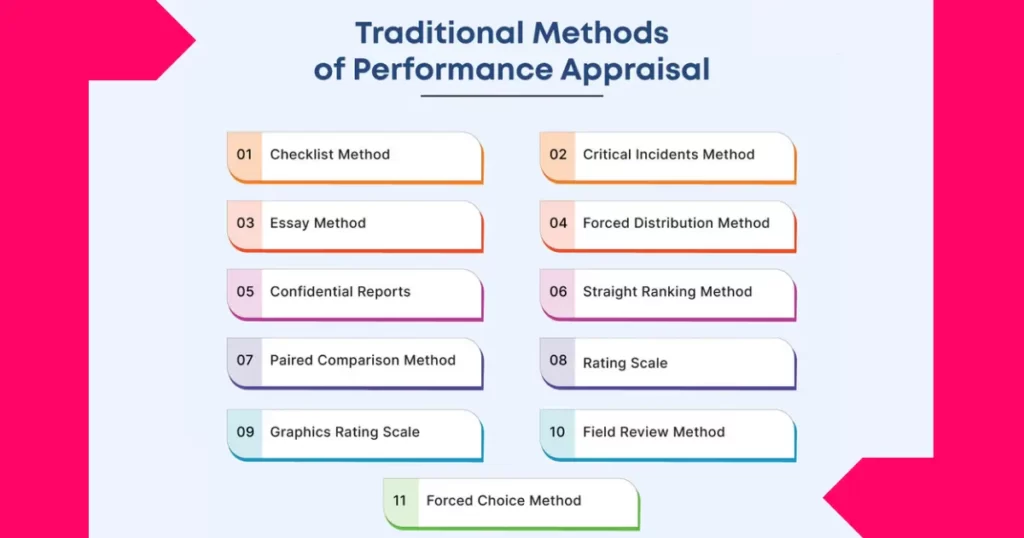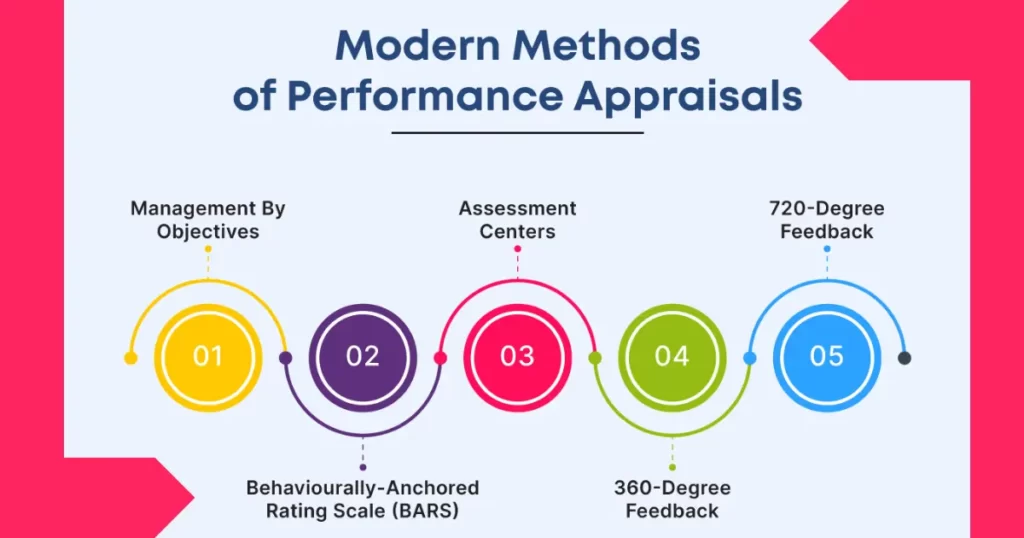Introduction
Performance appraisal is a crucial element in organizational success as it provides a structured process for evaluating the performance and effectiveness of employees.
A performance appraisal is a systematic and periodic process of measuring an individual’s work performance against the established requirements of the job.
It’s a subjective evaluation of the employee’s strengths and weaknesses, relative worth to the organization, and future development potential.
Table of Contents
Performance Appraisal Definition
Performance appraisal refers to the systematic assessment of an employee’s job performance against predetermined criteria and standards. It serves the purpose of evaluating individual contributions, identifying areas for improvement, and recognizing exceptional performance.
Key Elements of Performance Appraisal
- Identifying performance criteria and standards: Clearly defining the specific metrics and competencies that will be used to assess employee performance ensures consistency and objectivity in the evaluation process.
- Setting performance goals and expectations: Establishing clear goals and expectations provides employees with a roadmap for success and motivates them to strive for higher levels of performance.
- Defining the evaluation period: Determining the appropriate timeframe for performance evaluations allows for a comprehensive assessment of an employee’s performance over a specific period, such as annually or quarterly.
Role of Managers and Employees
- Manager’s responsibilities in conducting performance appraisals: Managers play a vital role in conducting fair and objective appraisals. They must provide accurate feedback, recognize achievements, and identify areas for improvement to foster employee growth.
- Employee’s role in the appraisal process: Employees should actively participate in the appraisal process by reflecting on their performance, seeking feedback, and using the evaluation as an opportunity for personal and professional development.
Benefits and Challenges of Performance Appraisal
- Advantages of effective performance appraisal:
- Enhanced employee performance: Regular performance evaluations promote accountability, goal-oriented behavior, and overall productivity.
- Improved communication: Appraisal discussions encourage open dialogue between managers and employees, fostering trust and better understanding.
- Talent retention and development: Recognizing and nurturing employee potential through performance appraisal contributes to increased employee satisfaction and reduces turnover.
- Common challenges and how to overcome them:
- Bias and subjectivity: Implementing objective evaluation criteria and providing training to managers on unbiased assessment techniques can mitigate these challenges.
- Lack of feedback effectiveness: Facilitating regular feedback sessions, promoting a positive feedback culture, and improving communication skills can help overcome this challenge.
Performance Appraisal Methods
Performance Appraisal Methods are;
A. Traditional Methods

- Graphic Rating Scale: A widely used method that involves rating employees on various performance dimensions using a numerical or descriptive scale.
- Ranking Method: Ranking employees from best to worst based on their performance, which can be helpful when making comparisons across a team.
- Critical Incident Technique: Focusing on key events or incidents that reflect exceptional or poor performance, providing specific examples for evaluation.
B. Modern Methods

- Management by Objectives (MBO): Emphasizing the importance of setting clear and measurable goals aligning individual efforts with organizational objectives.
- Behaviorally Anchored Rating Scale (BARS): Assessing behavior against defined performance dimensions, using specific behavioral examples.
- 360-Degree Feedback: Gathering feedback from multiple sources, including peers, subordinates, superiors, and customers, to provide a holistic view of an employee’s performance.
C. Comparative Methods
- Paired Comparison Analysis: Comparing employees on various performance dimensions by systematically considering every possible pair.
- Forced Distribution Method: Categorizing employees into predetermined performance categories based on a pre-established distribution curve.
D. Emerging Trends and Technology
- AI-based performance appraisal tools: Utilizing artificial intelligence algorithms to analyze performance data, identify patterns, and provide valuable insights for decision-making.
- Continuous performance management systems: Moving away from the traditional annual review process, these systems facilitate ongoing feedback, coaching, and goal tracking.
Objectives of Performance Appraisal
A. Employee Development
- Identifying strengths and areas for improvement: Performance appraisal helps managers identify employees’ key strengths and areas where additional training or support may be required.
- Encouraging growth and skill enhancement: Appraisals provide employees with a platform to discuss their career aspirations, receive guidance, and create development plans to enhance their skills and capabilities.
B. Goal Setting and Performance Improvement
- Aligning individual and organizational objectives: Performance appraisal ensures that employees’ goals are aligned with the broader objectives of the organization, enhancing overall performance and productivity.
- Driving better performance and productivity: By providing feedback and establishing clear performance expectations, performance appraisal contributes to continuous improvement, enabling employees to reach their full potential.
C. Employee Motivation and Recognition
- Recognizing and rewarding top performers: Performance appraisal serves as a basis for identifying high-performing employees and rewarding their contributions, fostering a culture of recognition and motivation.
- Boosting employee morale and job satisfaction: Regular performance evaluations show employees that their efforts are valued, leading to increased job satisfaction, engagement, and commitment.
D. Identifying Training and Development Needs
- Identifying skill gaps and development opportunities: Through performance appraisal, managers can identify areas where employees may benefit from targeted training programs to enhance their capabilities.
- Facilitating targeted training programs: Performance appraisal outcomes guide the implementation of training initiatives, ensuring that employees receive the support they need to develop their skills and knowledge.
Implementing Effective Performance Appraisal Process

A. Preparing for the Appraisal
- Setting clear evaluation criteria and goals: Establishing well-defined performance criteria and goals ensures that evaluations are consistent and fair.
- Gathering relevant performance data and feedback: Collecting comprehensive and accurate data, including objective metrics and feedback from relevant stakeholders, enables a thorough evaluation.
B. Conducting the Appraisal Meeting
- Creating a comfortable and open environment: Building a trusting relationship and establishing an open dialogue during the appraisal meeting encourages constructive discussion and feedback exchange.
- Providing constructive feedback and guidance: Managers should deliver feedback in a constructive and supportive manner, focusing on areas for improvement while also recognizing achievements.
C. Addressing Performance Issues
- Strategies for handling poor performance: Managers should have a framework in place to address underperformance, including identifying root causes, providing additional support, and developing performance improvement plans.
- Developing performance improvement plans: Collaboratively creating action plans with employees to address performance gaps and establish proactive steps for improvement.
D. Follow-up and Monitoring
- Establishing a system for ongoing performance feedback: Regular feedback sessions outside of the formal appraisal process help monitor progress, address emerging issues, and provide ongoing support.
- Monitoring progress and providing support: Continuously tracking performance, providing necessary resources, and offering guidance throughout the evaluation period contribute to employee growth and success.
Best Practices for Performance Appraisal

A. Regular and Timely Feedback
- Importance of frequent performance discussions: Continuous feedback helps employees understand their progress, make necessary adjustments, and stay motivated.
- Providing feedback in a timely manner: Delivering feedback promptly after key events or milestones allows employees to take immediate action and make meaningful improvements.
B. Fairness and Objectivity
- Ensuring fairness and eliminating bias in evaluations: Implementing standardized evaluation criteria, providing training on unbiased assessment, and conducting calibration sessions can reduce subjective bias.
- Using objective criteria and standardized processes: Applying consistent performance metrics and evaluation processes across the organization promotes fairness and showcases the adherence to merit-based practices.
C. Training and Development for Managers
- Empowering managers with appraisal-related skills: Providing comprehensive training equips managers with the necessary knowledge and skills to conduct effective appraisals, deliver feedback, and coach employees.
- Providing guidance on delivering effective feedback: Teaching managers how to provide constructive, specific, and actionable feedback helps create a supportive and developmental appraisal experience.
D. Continuous Improvement and Evaluation
- Reviewing and updating appraisal processes: Regularly assessing the effectiveness of the appraisal system, gathering feedback from stakeholders, and incorporating improvements ensure its continued relevance.
- Encouraging employee input and feedback: Involving employees in the evaluation process through surveys or focus groups fosters a sense of ownership, improves engagement, and drives innovation.
Conclusion
Performance appraisal plays a crucial role in evaluating employee performance, identifying development needs, setting goals, inspiring motivation, and improving organizational effectiveness. By understanding the key elements, methods, and objectives of performance appraisal, organizations can implement effective evaluation practices that drive employee growth, performance, and overall success.
Frequently Asked Questions (FAQs)
- What is the ideal frequency for conducting performance appraisals?
- How can I ensure fairness in performance evaluations?
- What are some common challenges in performance appraisal and how to address them?
- How can managers motivate and inspire employees through performance appraisal?
- What role does performance appraisal play in employee career development?